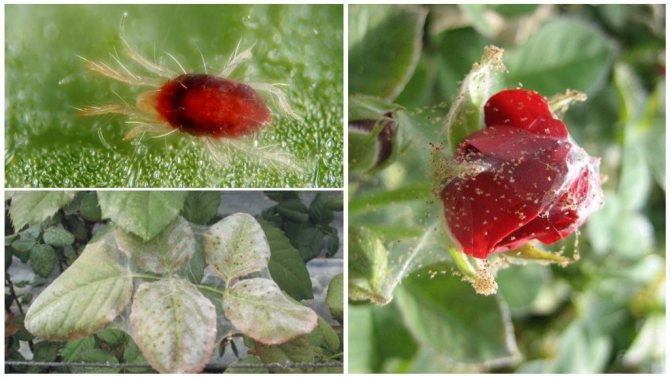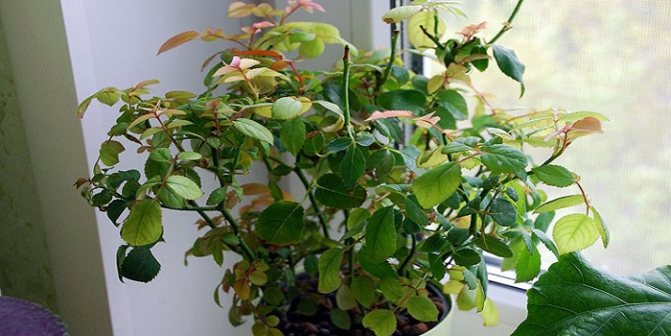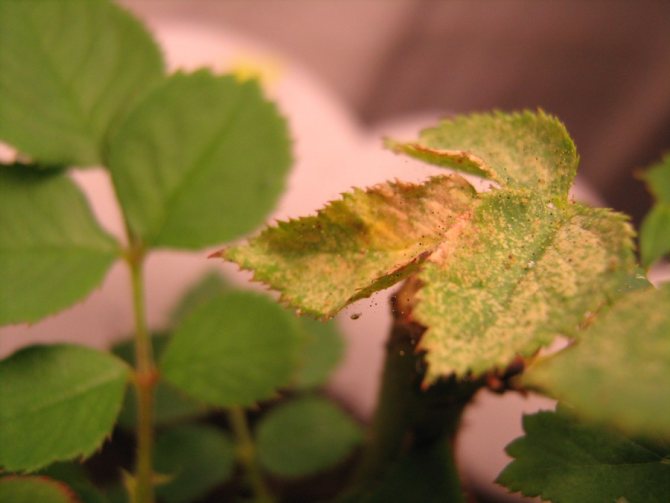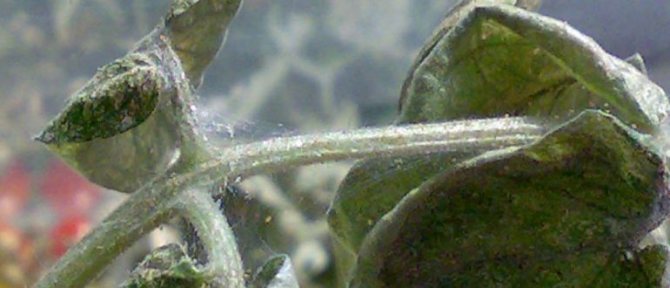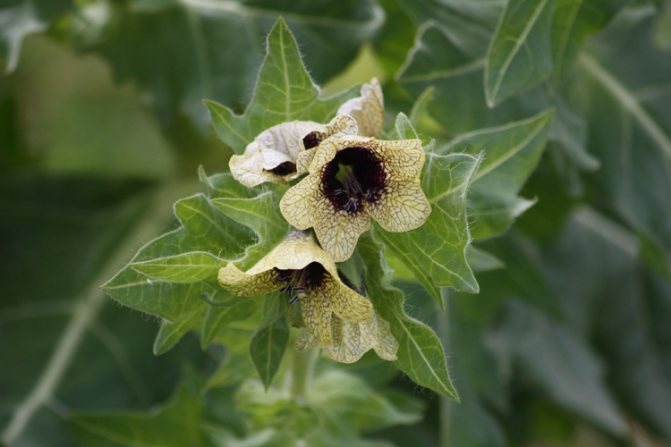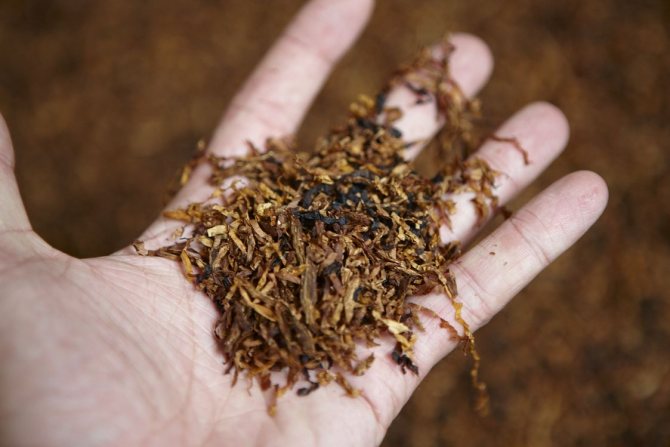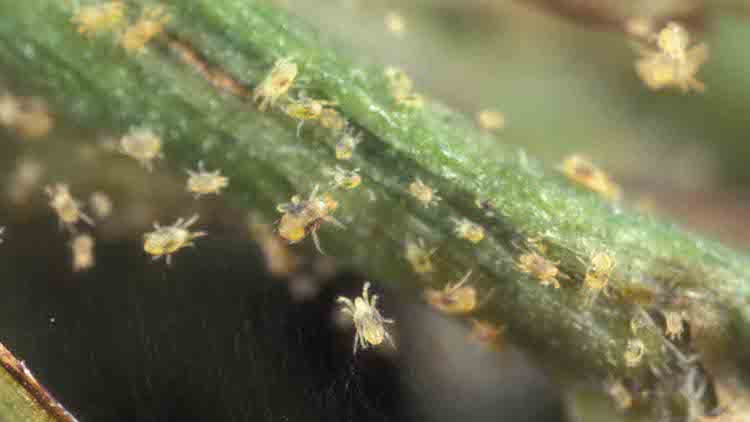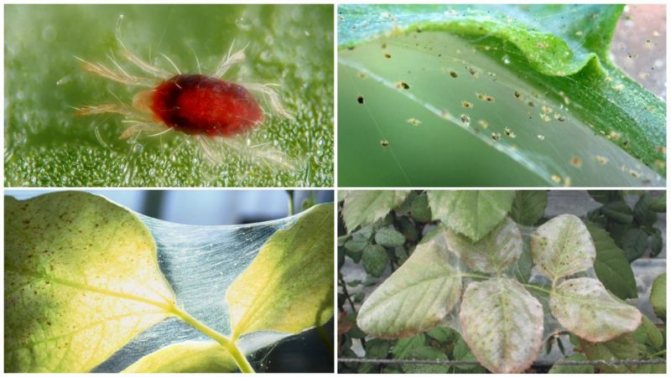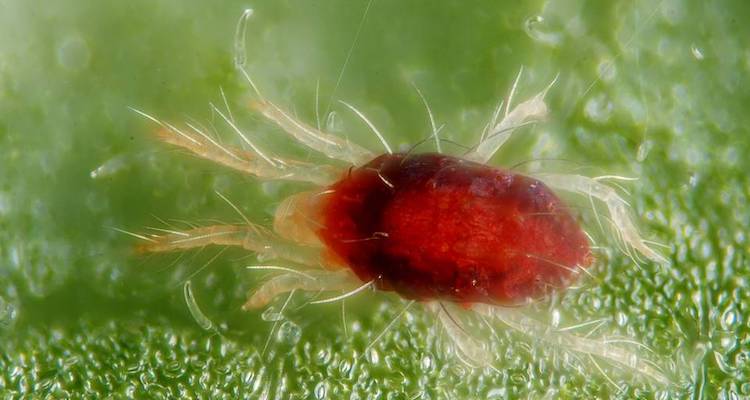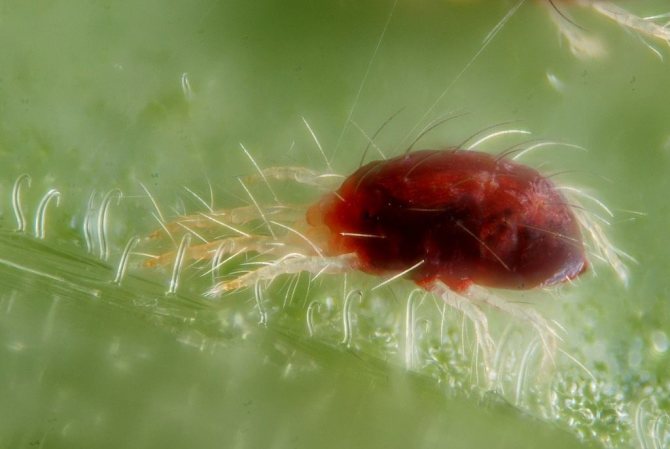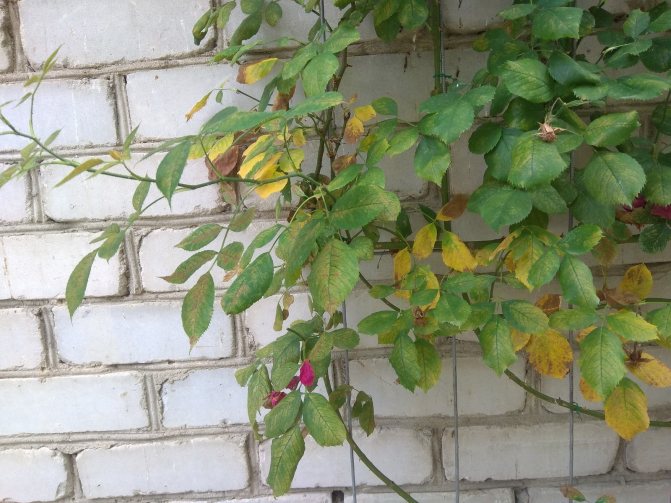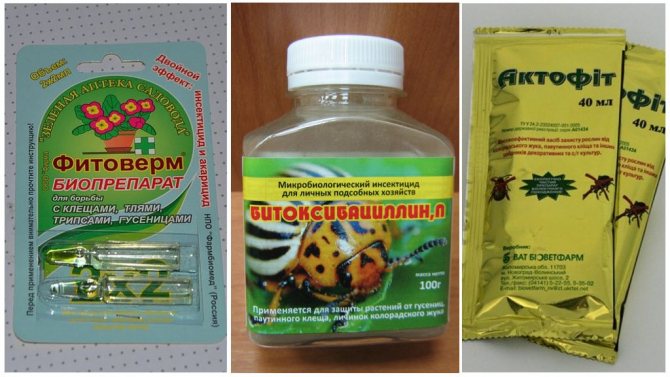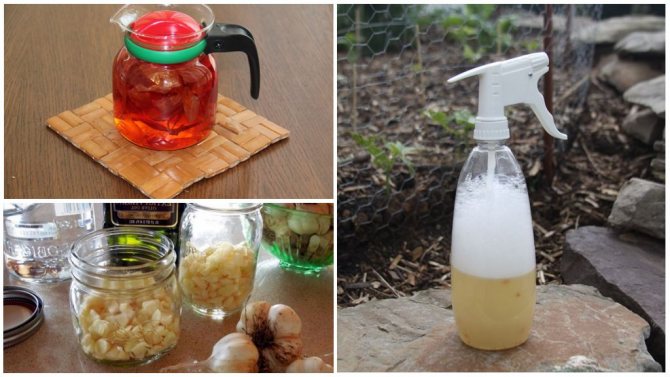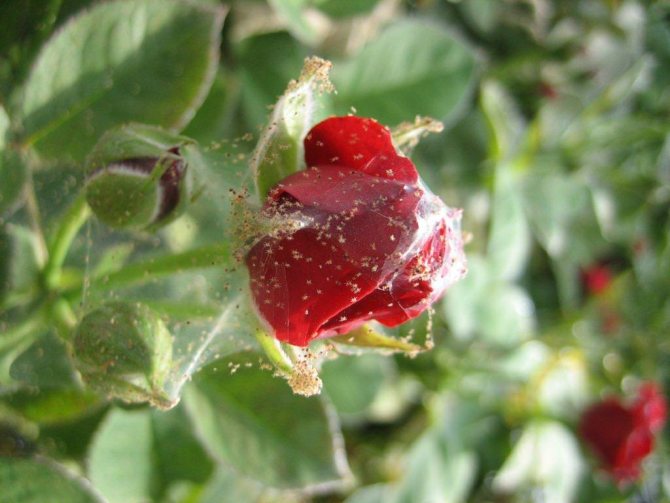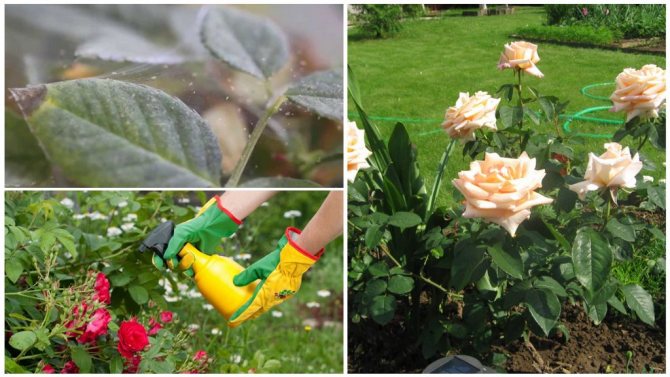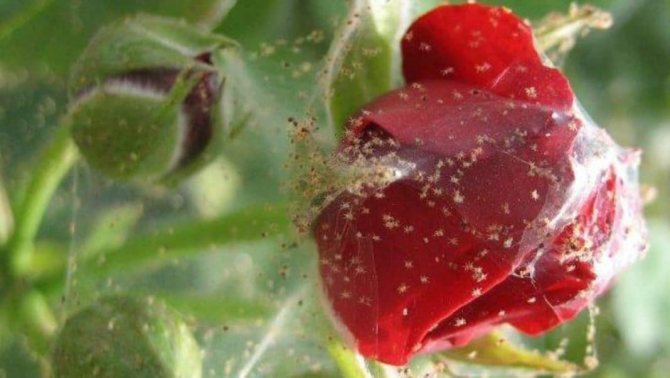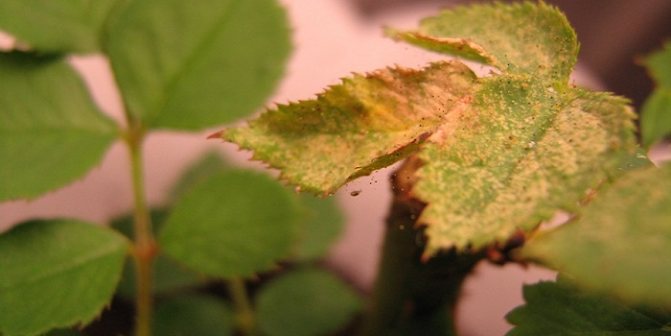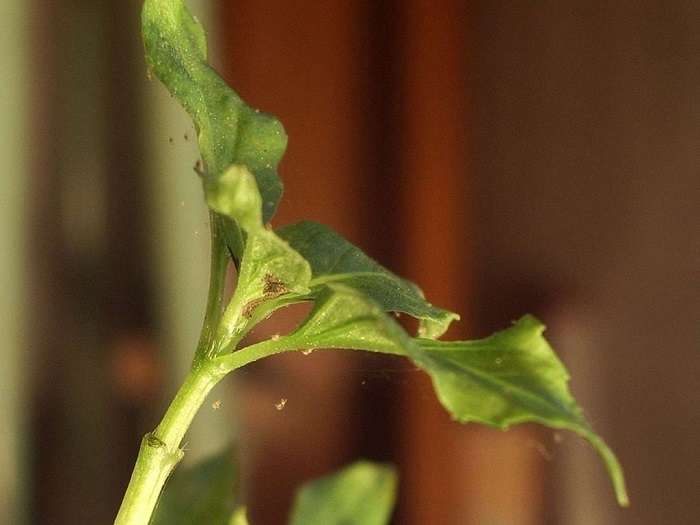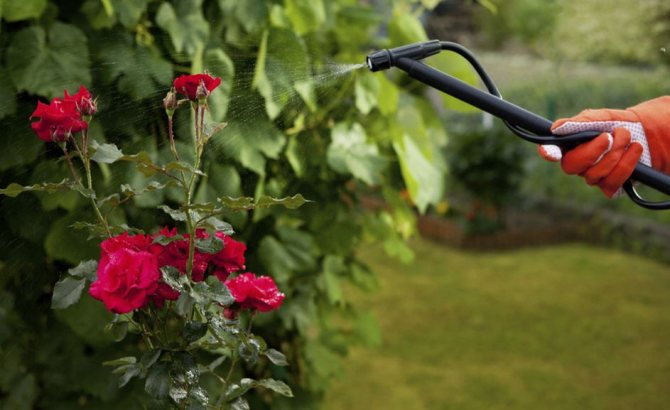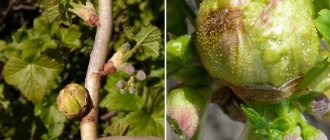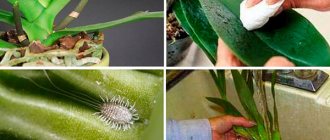The spider mite is a fairly widespread pest. It is a disaster for indoor plants, since it begins not only to oppress them, but also leads to death.
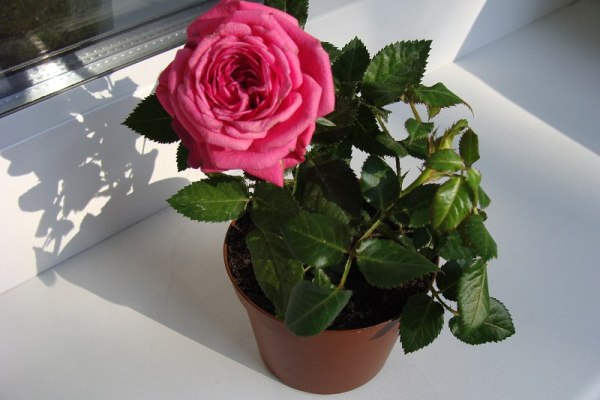
The key symptoms of plant infestation by such a pest are the appearance of yellowness on the leaves, the appearance of blackheads and a gradual wilting, which will continue for several weeks.
A mite is called a spider mite, since it weaves a small cobweb along the entire height of the plant. If the pest has just attacked the plant, then only the top will be affected.
It is worth noting that the mite is a very serious danger specifically for indoor plants, since it jumps from one plant to another very quickly at home. You can't hesitate here, otherwise all house flowers will be damaged.
Earlier we talked about ticks on humans.
Causes of a tick on a room rose
Often, indoor roses are kept in warm and dry climates, mistakenly believing that such conditions are ideal for the plant.
[ads1] Meanwhile, this climate contributes to the emergence and active reproduction of spider mites. And if the necessary measures are not taken in the near future, mass infection of all plants becomes possiblenext to the affected person.
I.e, The main reason for spider mite infestation of indoor rose is dry indoor air.
A tick can also infect a plant that is improperly looked after: indoor roses in an active vegetative period especially need moisture. And if the plant is not provided with this moisture, there is a great risk of the appearance of a spider mite.
Who is it?
A spider mite (Latin Tetranychidae) is an animal that belongs to the arthropod type, arachnid class, a subclass of ticks. The most famous representative of the family is the common spider mite. It is a pest of indoor, garden and agricultural crops. It is found on all continents where there is vegetation, except for Antarctica.
What is its difference from other species?
The main distinguishing feature of a spider mite is the ability to secrete webs., for which it got its name. They wrap the plant with this thin veil, in which they then live. Also, this species can change from green to orange or red. It all depends on what the parasite eats and where it lives.
What are the reasons for the appearance?
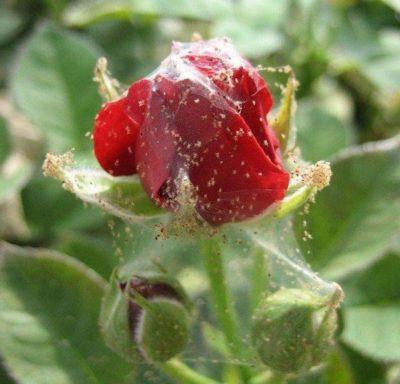

Maintaining the collection of indoor flowers at the proper level requires constant replenishment. Infection can occur:
- when buying a new copy;
- because of the bouquet, brought flowers;
- during the exchange of sprouts between growers;
- when a tick enters a room with the wind through an open window or window.
There is nothing to do here, because it is visually difficult to recognize the presence of a spider mite on a plant... At first, he may be inactive, being in a state of diapause.
Most often, the pest settles on plants with delicate and succulent foliage, in particular indoor roses. And, as a rule, roses are grown in warm and dry conditions, mistakenly believing that this microclimate is as comfortable as possible for a flower. Meanwhile, such parameters are the most successful for the active reproduction of the spider mite.And if you do not take action in time, then in a fairly short time all nearby flowers will be infected.
Attention: The main cause of indoor rose mite infestation is low indoor humidity.
A harmful insect can also damage a flower if it is not properly cared for. For example, during the active growing season, a rose needs a sufficient amount of water; with a shortage, there is a high risk of being affected by a tick.
Description of the pest
Tetranychidae is an omnivorous pest that differs in its internal structure from insects. The length of females is on average 0.5 mm, and males are even smaller. Ticks have 4 pairs of legs, while sucking insects have 3 pairs. The body is elongated, flat, divided into three sections. It has no chitinous cover. The structure of the eyes is simple, there are two pairs of them. Spider mite sucking mouth apparatus.
Ticks live in colonies. One generation of spider mites lives 12 to 24 days... The female lays over 100 eggs in her life. So for a year, animals can leave from 8 to 18 generations. The higher the temperature and the drier the air, the more actively pests develop. Under unfavorable conditions, ticks fall into suspended animation, and in this state they can stay for a long time in dry leaves, in the ground, while not losing their viability.
Read more about diseases and pests of roses in another publication.
What is the danger?
The spider mite causes irreparable harm to the plant, up to death. On the leaves of a houseplant, it is placed on the back side, and the juice is sucked out. Depending on the number of Tetranychidae individuals, one can judge the state of a room rose, but in any case, it does not look healthy and blooming.
First, the pest damages the lower parts of the flower, then moves to the outside of the leaf plate. Then it damages young shoots. In case of mass colonization, pests destroy the inflorescences and all non-woody parts of the rose.
How does it affect the plant?
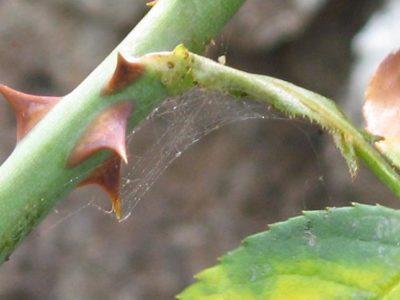

On a room rose the presence of a spider mite can be recognized by the following external signs:
- painful appearance of the flower;
- the appearance of white dots on the sheet, which over time increase in size, taking the form of spots;
- the presence of a thin web on the inflorescences and leaves of the rose;
- twisting of green leaves, with their subsequent drying and dying off;
- foliage turns pale, turns yellow, inflorescences become smaller in size (this and other reasons for yellowing of rose leaves are described in more detail in another article).
Consequences of infection
If it was still not possible to avoid the defeat of a room rose by a spider mite, it is important to start treatment of the plant as soon as possible. Otherwise, the consequences of infection can lead to negative consequences:
- The cells of the plant are destroyed, as a result of which it becomes weaker, the area of its photosynthesis is sharply reduced.
- The aesthetic appeal of the rose is lost. Her petals, fresh and green earlier, begin to turn yellow and dry. The buds become smaller and inconspicuous.
- The spider mite, in addition to feeding on plant cells, depriving it of vitality, is also a carrier of various infectionssuch as gray mold and others.
Rose varieties resistant to gall mite
When planting roses, breeders pay attention to resistance to diseases and pests. Below are just some of the types of roses that are resistant to attacks from a gall mite attack.
Gloria Day. This American hybrid, like a chameleon, changes its color all year round during the flowering period. Gloria Day is not afraid of fungal diseases, apical rot and spider mite attacks.
Gloria Day Flamenantz. At home in Germany, this climbing rose is called the "Dance of Fire". It is not hard to guess: it blooms in bright red. Flowering occurs only once a season from mid-May to the first half of June.
Flamingo Golden Showers. Another climbing type of rose. Southern latitudes are considered a favorable climate. It blooms all summer, but it blooms profusely twice during the summer season. This species is resistant to spider mite invasions.
It is worth noting that absolutely any plant requires care. With proper care by the grower, the plant will not suffer from insect attacks.
Prophylaxis
In order to avoid damage to a room rose by a spider mite, it is necessary to provide the plant with proper care.
Since the mite actively reproduces in low humidity conditions, it is necessary to provide high-quality moisture to all surface parts of the plant.
It is recommended to periodically spray the rose with water at room temperature from a spray bottle. In this case, you need to ensure that water drops do not linger on the leaves and petals of the plant for a long time, this can trigger the process of decay.
It is necessary to remove dried leaves and faded buds from the plant in time, since the mite can actively develop in them, gradually infecting the entire plant as a whole.
Signs of defeat
The presence of a spider mite on roses becomes noticeable only with active reproduction of parasites and manifests itself in external signs:
- the leaves of a home rose turn yellow and fall off, curling into a tube;
- in case of mass defeat, they become white and completely entangled in the cobweb produced by ticks;
- indoor rose grows poorly and weakens before our eyes due to a violation of the process of photosynthesis, the buds become small;
- diseases (gray rot, etc.), carried by ticks, may appear on the flower.
Room rose treatment
Signs of defeat
Before starting treatment, you need to make sure that the cause of the plant's ailment is precisely the spider mite.
Here are the main signs of the presence of this parasite:
- The plant is covered with cobwebs.
- On the outside of the leaves of the rose, light dots and spots are visible.
- The leaves of the plant dry up and fall off.
- Moving small dots can be seen on the inside of the sheet. These are ticks.
Pest control
Basic Pest Control Tips:
- First of all, amazed the plant must be thoroughly washed with soapy water. This will significantly reduce the number of parasites.
- The plant is watered abundantly with cold water.
- Rose leaves are treated with a decoction of onion peel or dandelion medicinal (the procedure is carried out 1 time in 4-5 days).
- You can use a diluted infusion of garlic. 170 g garlic, scrolled in a meat grinder, pour a liter of water, insist 5 days. The resulting infusion is diluted with water and the leaves of the plant are sprayed with this solution.
- If the plant is very heavily infested, the use of mite control chemicals (Actellik, Neoron) is recommended. These funds are quite toxic, therefore, using them, it is necessary to protect your hands, provide an influx of fresh air in a closed room. The advantage of these drugs is their effectiveness, it is enough to use the agent 1 - 2 times, and the spider mite problem will be resolved.
Video recommendations
The video below should help you cure your plants from this unpleasant disease, it will discuss general methods of fighting and preventing domestic roses, and the drug Actellic will be considered as the main "weapon".
It is known that preventing infection is much easier than treating it later. That is why provide your plant with proper care, and it will not cease to delight you with its beautiful appearance.
News from partners:
2 comments
My indoor rose began to fade. The buds seem to be covered with fluff. I realized that something was wrong with the plant and started looking for the reason on the Internet.I came across your article and I realized that this is probably my problem described. I washed all the leaves with soapy water and treated it with garlic infusion. Hope it helps.
Very good article, sorry I didn’t meet it earlier. From the description, I realized that my rose died from this harmful parasite. I did a "bath" for the rose, but it helped only for a while. Now, I will know how you can deal with a pest. Thank you!
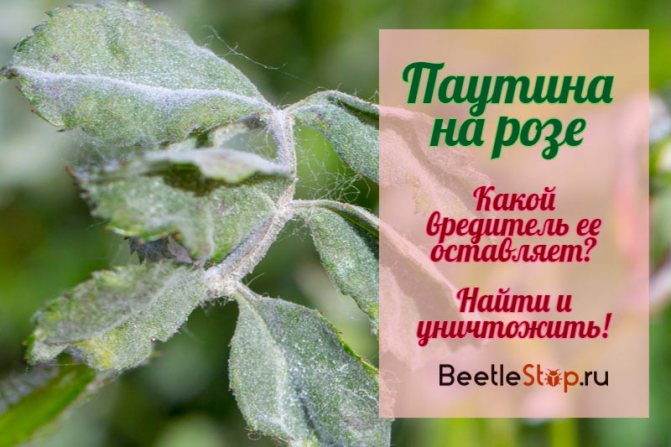

Unfortunately, almost every fan of plant and flower planting is faced with the appearance of pests. A spider web on a rose is one of the most common occurrences. It is caused by a spider mite, it is these insects that pose the greatest danger to the life of these beautiful plants. Remember, the spider web on the rose and the drying leaves are not a sentence. It is important to detect in time and take measures to destroy the pest, if this is done on time, then the plant can be saved, and it will grow intensively, delighting you with its refined beauty.
Folk remedies
Most of the existing alternative methods are also very effective, although their cost is not as high as that of professional drugs. They show themselves best if the mite has not yet had time to multiply strongly, in other words, at an early stage of plant damage.
Also, folk methods will be very useful if the rose is still too young, respectively, its shoots are quite delicate and sensitive to chemicals.
Folk remedies against spider mites:
- Indoor plant lovers recommend using ordinary tar or household soap. As a last resort, you can use dishwashing detergent. Dilute a weak soapy solution, moisten a soft cloth in it and gently wipe the leaves. It is desirable that there is as much foam as possible in the solution. Wash it off a few hours after application, then immediately close the plant with a plastic bag. Too high humidity will be created under it, detrimental to ticks. Within a day, they will all have to die. In addition, a soapy solution can be used to treat potted soil. Here you will have to be as careful as possible: you should try to prevent the solution from getting on the roots of the plant.
- You can use garlic: for this you need to take the middle head, peel it and grind it into porridge. Then they put it in a jar and pour 500 ml of boiling water, close the lid tightly and place it in a place hidden from sunlight for about five days. The infusion should be thoroughly filtered, mixed with water in equal proportions and sprayed on the affected plants.
- Onions are also quite effective in controlling ticks. To prepare the solution, one hundred grams of husks should be collected, which are poured with five liters of hot water, and then infused for five days. After that, they need to be filtered, and the infusion should be sprayed on the affected areas. This tool will be very effective with a small number of pests, however, even with severe lesions, it can give a very acceptable result, moreover, it can be successfully combined with various additional chemical agents.
The appearance of a spider mite and signs of plant infection
It looks like a small insect with a rounded body covered with bristles and various colors. You can see them on the bottom of the leaves, on the ground or on the window frame. Females are much larger than males in size. This type of pest multiplies rapidly and has the ability to move from one plant to another. An adult female can lay several hundred eggs on one rose. Eggs have a special vitality and can be in various secluded places for up to five years.
The first signs of the vital activity of pests are small white dots and minor damage to the foliage, later the spots increase in size, the affected parts of the flower completely change color.Rose buds become smaller and more inconspicuous. Spider mites pierce the leaves of the plant and feed on its sap, which leads to its gradual wilting and drying.
The cobweb on home roses is also a sign of the vital activity of pests, it can contain a large number of insects, because ticks prefer to stay in groups. With an advanced form of the disease, the flower can be completely covered with cobwebs.
A warning! The spider mite, in addition to feeding on plant cells, depriving it of vitality, is also a carrier of various infections, such as gray rot and others.
Inspection for the presence of a parasite
Of course, the sooner parasites are found, the faster the plant will recover. But you won't be able to see them with the naked eye. Therefore, if in doubt, and besides, the flower does not look good, do not be lazy and examine the lower parts of the leaves with a magnifying glass.
A piece of paper can also indicate the presence of parasites.:
- First you need to spread a clean sheet on the table.
- Then shake a room rose over it.
Fallen arthropods will immediately indicate their presence.
Reasons for the appearance of a tick on a room rose
Often caring housewives keep houseplants in warm and dry climates, mistakenly thinking that such conditions are most favorable for plants. But in fact, such an environment contributes to the emergence and active reproduction of a spider mite, which in a short period of time can massively settle on all plants that are close to the affected one. That is, the main reason for the occurrence of the pest is dry air and high ambient temperatures. That is why plants most often get sick during the heating season and during dry hot summers.
Also, insects infect plants that are not properly looked after. For example, a room rose in the vegetative period really needs moisture and if this is not done, then there is a risk of being hit by a tick. Insects primarily affect weakened roses that do not have immunity and suffer from a lack of nutrients. But over-fertilization, improper watering, and lack of sunlight also increase the risk of pests. Therefore, knowing how to properly care for flowers and creating a certain climate, you can avoid the appearance of a spider mite. But if, nevertheless, it was not possible to avoid infection, then it is important to promptly begin an effective fight against parasites.
Testimonials
I wash my homemade roses with prepared soapy water every week. This helps to avoid the appearance of spider mites and other small pests. With such care, chemistry is not needed.
I had such a critical situation with a rose in the garden, spider mites almost ate it, and only chemical agents helped to save it. Used Actellic and Neoron, alternated every 7-10 days.
I practice periodic “bathing” in soapy water for my home roses, and when ticks are found, I use biological products: Fitoverm, etc., the main thing for them is to provide constant and caring care. Then the flowers will be fresh and healthy.
Destruction methods
It is quite difficult to deal with a spider mite, so measures for its extermination must be comprehensive. It is good, for example, to combine chemicals with folk remedies. A previously infected plant must be cleaned with special care using soapy water and watered abundantly, this will significantly reduce the number of insects.
Then use the funds, depending on the degree of infection.
Traditional methods
If the damage to the plant is not too large, you can try to do with folk remedies for tick control:
- Finely chop two heads of garlic and pour in a liter of water, leave for five days. Before spraying, dilute the solution with the same amount of water;
- Pour one hundred grams of onion husks with five liters of water and leave for five days. Then strain the solution and spray the plant with it several times until the pests completely disappear;
- Periodically rinse the foliage of plants with water and laundry soap or Fairy - for this you need to put the plant in a bath and lather the leaves, branches, a pot and a tray with soap with a sponge, the ground must also be sprayed with soapy water, but not spilled so as not to get on the roots. Do not wash off the foam for 3-4 hours, but not longer, then wash it off well and cover the flower with a bag for a day;
- Grind several cyclamen tubers and cook for 40 minutes, then wrap and leave for 24 hours. Process flowers with this infusion several times a week;
- Medical alcohol - wipe the leaves of the plant, the mite will be destroyed, but the eggs cannot be destroyed in this way;
- The roots of medicinal dandelion in the amount of 30 grams are crushed and poured with a liter of water. Insist for three hours. Spray the damaged rose several times;
- Biological control with the help of predatory insects that are not averse to feasting on spider mites. These insects include: phytoseiulus, californian amblyseius and mackenzie, metaseyulyu and common goldilocks. You can buy them in specialized stores or greenhouses. One predator eats up to five spider mites or ten eggs per day, so the more predators there are, the faster it will be possible to get rid of the pests.
Chemical methods
Now there are many chemicals that can quickly get rid of the cobweb on the room rose and the pests that create it. The main ones are acaricides: Neoron, Fitovern and Aktellik. These products can help you completely get rid of harmful insects in less than a week.
- Actellic is the most effective and toxic agent. Therefore, when processing, you need to wear gloves, closed clothing and a mask. Use the drug in a well-ventilated place.
- Photoverm is less toxic and can be processed indoors, but the effectiveness of the product remains at a high level. Within five days after treatment, the tick must be completely exterminated. Despite the lower toxicity, it is also important to observe precautions when working with this drug.
- Neoron - perfectly destroys adult ticks and their larvae. For the complete extermination of insects, at least two plant treatments are required.
Advice! After processing the rose, you can put a large bag on it and leave it for up to two days, the humid environment will kill the ticks that survived, hiding in the ground. It is important to process and close not only the plant, but also the pot with the pallet. Also, after getting rid of the tick, you need to wash the windowsill and windows with soapy water or wipe with alcohol, wash the curtains.
Since the use of chemicals is most effective against adult insects and already hatched larvae, and laid eggs are not so easy to destroy, treatment with any means must be carried out 2-3 times.
How to process a rose?
The main difficulty in fighting a tick is that such a pest practically does not react to many drugs. Moreover, he can easily adapt to them. In this regard, the use of only one drug will not give the desired effect. It is advisable to take two or even three funds at once and alternate them with each other.
As mentioned above, the spider mite is an arthropod, therefore, in order to cope with it, it will be necessary to resort not to insecticides, but to acaricides and other similar means.
Chemicals
Today, there are a huge number of substances on sale that are aimed at combating spider mites that attacked a room rose. However, not all of them are effective enough: they only help for a while, after which the pest appears again, or they do not get rid of it at all.
Spider mite chemicals:
- Fitoverm is one of the best quality tools that allow you to quickly and permanently deal with the pest. In fact, this drug is of biological origin, moreover, it allows you to cope with both adult insects and their larvae. For a qualitative effect, take an ampoule of the product, the volume of which is 2 ml, and dissolve in a glass of clean water. The affected plant is treated with this solution, as well as all flowers that were in the immediate vicinity. Every 5-8 days, the plants are treated with this agent. As home plant lovers say, four sprays are enough.
- It is necessary to treat the flower with "Epin"to support and accelerate its development, a couple of days after each spraying.
- Another equally effective remedy is "Neoron", which also helps to cope with an adult tick, kill all the larvae in the embryo and even destroy the eggs, so it will be enough to carry out a double treatment, between which about a month should pass.
- If the tick has managed to get used to these drugs, or if a large number of plants have been infected, it is advisable to use a more powerful agent: "Actellik", in which the main part is the substance pirimiphos-methyl. As a rule, it is used in agriculture, however, it will also be quite suitable for home flowers. When using this product, you must remember that it is strong enough, moreover, it can harm the health of people or pets. All work associated with the use of this product must be carried out in the open air, wearing protective gloves and a mask. So that the pests do not have time to get used to even this rather strong remedy, plants should be treated with them no more than two times in a row. Usually this is quite enough to destroy all traces of the spider mite on the plant.
Preventive measures
To prevent the appearance of a tick, the most important thing is to systematically and competently take care of the plants, to maintain a certain temperature and humidity in the room. Spray the flowers periodically with water from a spray bottle, ensure sufficient watering and feeding. All this supports plant immunity and resistance to pests. Constantly remove dry, spoiled leaves and buds, inspect plants for the presence of insects. Pay special attention to inspection in the autumn, when infection occurs most often. The sooner you find pests, the easier it will be to destroy them and the less damage will be done to the plants. Now you know what to do if a cobweb has appeared on the rose and you can effectively destroy the cause.
There are many plant pests. The spider mite is considered the most malicious. This small arachnid arthropod is very common. Both indoor and garden plants suffer from it. From the publication, the reader learns what a spider mite is on roses, how to deal with it.
Signs of an affected plant
It is possible to identify a plant that is infected by the following criteria:
- the appearance on the leaf plates of small black dots (traces of the proboscis of the larvae);
- change of natural color to yellow;
- folded leaves;
- slow growth and development of the bush;
- numerous cobwebs;
- massive fall of foliage;
- decrease in the size of the buds;
- defeat by fungal ailments;
- painful condition.
Consequences of infection
If you do not know how to get rid of spider mites on roses, then there is a high probability of losing a flower. It is necessary to start treatment at the first signs of detection of a parasite. Among the consequences that will appear in the absence of spraying with chemicals or folk remedies, they note:
- Destruction of cells, leading to a deterioration in the process of photosynthesis. The result is a weakening of the flower.
- Loss of decorativeness. Green leaves quickly turn yellow, dry up, buds become smaller.
- The appearance of gray rot or other fungal disease. A pest is a common cause of the development of such an ailment. Since the insect feeds on the cell sap of the plant, its immunity decreases, and the degree of susceptibility to parasitic individuals increases.
The sooner you start treating a rose affected by spider mites, the more chances you have to help it quickly recover.
Description of the pest
This small pest loves to feast on a rose most of all. Moreover, regardless of whether the rose grows as a bush or twists in a whip along the wall, this plant is the favorite habitat of the spider mite. The leaves of a rose infected with a mite begin to turn yellow, dry, the plant loses moisture, depletes and withers.
The spider mite is very small in size. You can see it only with the help of magnification, for example, use a magnifying glass.
On a note! Female spider mites are larger than males.
These pests settle in large groups, each of which contains more than a hundred individuals. The first sign of the presence of parasites on a rose is a thin cobweb on the underside of the leaves. Adults hide under it, laying eggs. Gradually, the colony spreads over the entire surface of the leaf.
An adult spider mite has an oval-shaped body and four pairs of legs. The larvae have three pairs. The average size of the parasite is about 0.5 mm. Moreover, females have a size of 0.4-0.6 mm, males - no more than 0.4 mm. Spider mites have a soft cover. The body is flat below, slightly convex above. In the larval stage, the insects are almost transparent. Over time, they acquire a pale greenish or greenish-brown hue. There are dark spots on the sides. In wintering females, from autumn to spring, the color is red or bright red.
Note! The spider mite lives for a relatively short time, a little more than four weeks. However, despite such a short period, females manage to lay more than a hundred eggs, from which young larvae are born in a couple of days.
How can an insect harm flowers?
The insect is small in size, no more than 0.5 mm, so it is quite difficult to see this parasite. Despite its small size, the pest is a deadly threat to the shrub. It feeds on plant cells of culture, damaging its integrity.
These parasites infect the leaf plates, and small spots appear on the plant, but if you overlook these symptoms, the entire foliage of the culture will be covered with cobwebs.


Features of the life of spider mites
Ticks feed on plant sap, which is sucked from green leaves and stems. In the summer, it is quite difficult to deal with this pest, since it is difficult to process all the greens in a summer cottage with high quality. But in the fall, you need to remove fallen leaves from the territory, since this is an excellent place for the wintering of ticks.
On a note! Fallen leaves and other plant debris must be collected in heaps and burned, since in addition to ticks, they can also be affected by other parasites.
In the spring, with the first warm rays of the sun, ticks wake up and actively attack young plants. This pest is very voracious and multiplies quickly. Spider mite larvae, in the presence of an abundant amount of food, become an adult in a very short period of time. By the summer, the colony of ticks is already impressive in size.
How to care for a rose: 4 rules of care
In order for the roses to be not weak and to be able to resist diseases and pests, they must be carefully looked after:
| Rule 1. Top dressing Top dressing is an important step in caring for a rose:
|
| Rule 2. Watering Roses are watered no more than once a week. During a drought, you can water the bushes more often. The water should be of medium temperature and poured into the root. Watering rate - 1 bucket per bush |
| Rule 3. Prevention An obligatory stage in caring for a rose is its prevention from pests and diseases: spraying with water and insecticides, destruction of plant residues, quarantine and soil selection |
| Rule 4. Pruning Shoots that grow inward, wilting and damaged branches of the rose must be cut off. If you cut off excess shoots in time, young shoots and flowers will form more actively |
Read more about proper rose care in the video:
Causes of rose infestation
One of the reasons for the appearance of spider mites on roses is the wind. In dry weather, ticks are transferred from one plant to another, spreading throughout the garden plot. If a rose is weakened or not properly looked after, then first of all it is on it that the spider mite will settle.
Cold weather is fatal for the tick. He's also afraid of rain. Birds also help fight the pest, for which the tick is an excellent treat. However, this only slightly reduces the insect population. For a complete solution to the problem, these factors are not enough.
Spider mite on roses
When growing indoor roses, some growers mistakenly believe that a dry and warm microclimate will be favorable for plants. This opinion is fundamentally wrong. These conditions are the main cause of indoor rose infestation. Dry air is an ideal breeding ground for spider mites. The tick does not tolerate a humid environment.
Description of the parasite and the cause
Spider mites belong to the class of arthropods and annoy flowers quite often. They are able to very quickly move to neighboring plants, where they arrange new colonies that multiply at a high speed. The difficulty of detecting such microscopic insects is the main reason that the problem becomes noticeable only when the stem, leaves and flowers are severely damaged.
The size of the mite is 0.2-0.5 mm, the body is oval and covered with hairs, colored red or brown (see photo of a spider mite on roses). You can see such a creature only under a microscope. They live everywhere: on the stem, leaves, shoots, inflorescences. The diet of pests consists of plant juices, which they suck from all parts of the flower. Females are able to reproduce very quickly, laying eggs, from which young voracious green larvae appear after a couple of days.
On indoor plantings, they can get through windows or from the soil when buying decorative flowers in a store.
On decorative flowers, including roses, spider mites settle when favorable conditions arise. They prefer a dry and warm microclimate, but cannot stand high humidity. In the absence of frequent watering, with dry soil in the garden or in indoor conditions, the risk of invasion and transition between plants increases dramatically, which can be fatal for delicate roses.
The result of the activity of a spider mite
If the number of spider mites is small, then it does not do much harm to the rose. However, under favorable conditions, the mite colony grows rapidly and harms the plant. Larvae and adults, biting through a leaf, feed on plant juices, as a result, the plant begins to wilt. Black spots appear on the leaves, the foliage turns yellow, dries and falls off.
Important! Spider mites are especially harmful to young plants. On affected rose bushes in dry climates and insufficient humidity, healthy buds simply will not form.
How spider mites affect a rose
Minimal accumulations of spider mites are not as dangerous as it might seem at first glance. They are, of course, active, but initially they do not so terrifying damage to the plant. Their activities are divided into the following stages:
- black dots appear on the foliage (in some cases, large spots);
- castings gradually turn yellow, after which they fall off;
- on the remaining shoots and buds, a web forms over time;
- there are so many ticks that whole herds can be seen.


These pests work, as they say, slowly but surely, systematically depleting their prey, stopping the active growth of the bushes. If we are talking about young seedlings or roses that have not yet matured, then without urgent measures to eliminate parasites, they can die, literally never blossoming. A gardener needs to think faster than treating a rose from a spider mite at home, or what other methods to resort to in order to have time to save his brainchild.
A cobweb appeared on a rose: what to do at home
There are two main methods of dealing with bugs:
- chemicals;
- folk remedies.
The choice depends on how badly the plants are affected.
Chemicals
The spider mite belongs to the class of arachnids. Chemical preparations intended for the destruction of insects - insecticides - do not work on ticks. What to do if a cobweb appears on a home or garden rose? It is necessary to use agents against spiders - acaricides, which are divided into 2 types:
- Insectoacaricides are drugs that have a detrimental effect on both spider mites and other pests.
- Specific acaricides are compounds and mixtures that act only on ticks. They differ in chemical composition and are drugs of contact action, that is, they act on parasites in direct contact with the integuments of their body.
Additional measures for tick control
The success of the manipulations carried out against the pest depends on the stage of infection, and on its number. First of all, you need to inspect the flower to identify an insect. If it is found, rinse the bush with warm water and wipe the leaves with a weakly concentrated alcohol solution.
When the plant dries up from water procedures, it should be sprayed with an appropriate chemical or folk remedy. You also need to process the window sill, all the objects next to the pot. After a week, it is necessary to reuse the working solution, apply fertilizer with potassium to increase the plant's defenses.
Prophylaxis
The gardener should take care of the prevention of the appearance of spider mites on roses in advance, so that later he does not waste energy on fighting them. Preventive measures are fairly simple and cost-effective:
- Inspect plant leaves periodically. When a cobweb appears on the leaves, you should make sure that it was the spider mite that was her fault, and only then apply the necessary drugs.
- Isolate the newly purchased plant in a separate room for several weeks.
- Avoid dry air. Water the plants regularly, as wet conditions are an uncomfortable breeding ground for spider mites.
- Periodically wipe the flowerpots and pots, as well as the places on which they stand, with soapy water.
- Periodically remove and burn fallen leaves in the area.
- If, in addition to roses, there are orchids in the house, then these plants should be placed as far away from each other as possible. Otherwise, after infecting all the roses, the mites will move on to the orchids.
A spider mite is an unpleasant phenomenon. However, if you follow all the preventive recommendations, you can avoid contamination of plants with this parasite. And then the beautiful pink buds will cheer you up and delight your eyes with their blooming appearance.
How to deal with spider mites?
It is quite difficult to cope with such a pest, often it is not possible to do this, and the plant simply dies.First of all, it should be remembered that this insect belongs to the category of arthropods. If you lose sight of this moment, it will be even more difficult to deal with it.
The main methods of struggle are as follows:
- Remove the affected areas, carefully examine all the plants;
- Indoor roses are thoroughly washed under warm water. Can be additionally wiped with a mild alcohol solution. If one plant is affected, it should be taken to a separate room;
- After the leaves dry out, they are treated with chemical or folk remedies. The pan of the pot needs to be scalded with boiling water, and the flower itself will have to be covered with a plastic or paper bag for several hours;
- All houseplants are treated with special prophylactic agents, and the same will need to be done with window frames, glass and window sills;
- One week later, another treatment is carried out.
Thrips are dangerous and common pests of indoor plants. On the site you can read how to deal with thrips on indoor plants.
Spider mite control methods. Improvised and folk remedies
If a spider mite is found, you need to start fighting with it without delay and take any measures for this. Otherwise, there is a risk of plant death. In the fight against a pest, the means that any housewife has in the house will come in handy.
You should start with an increase in humidity, since the parasite does not tolerate such conditions. You need to water abundantly and spray the plants every day. In this way, future development of the insect can be prevented.
You should also treat the plants with a soap solution prepared yourself, or with a special organic mixture, which is sold in stores ready-made. You need to process the leaves with a sprayer, trying to get the mixture on the bottom of them, after which, each sheet must be wiped with a napkin.
If you use insecticidal soap for spraying, then you need to be sure that it will not cause much harm to these plants. It is phytotoxic and therefore not suitable for all situations. As a last resort, you can do a test by processing one sheet.
The video below shows an excerpt from the "Dacha" program, where they talk about the methods of dealing with this pest. I recommend that you familiarize yourself.
Spider mite remedies and preparations
If you don’t want to resort to folk methods or you don’t work, you can use specially developed drugs designed to combat the above pest.
The choice of means and drugs to combat this parasite is very large.
- The chemical agent "Neoron" is used both to combat the parasites themselves and to destroy the larvae of these pests.
- "Aktelik" is a very powerful tool for the extermination of spider mites. It is important to know that it is highly toxic, and therefore it is necessary to process the plant in a well-ventilated area.
- Fitoverm is a drug that is used for the immediate extermination of pests. The specified tool is considered less toxic, therefore, the rose can be processed directly in the apartment.
- "Bicol" is a frequently used drug that has destructive properties, including on tick larvae.
- Talstar - along with whiteflies and mealy worms, kills spider mites. This drug has a contact-intestinal effect, which makes it possible to get rid of both already settled ticks and avoid the appearance of new parasites for 3-4 subsequent weeks.
In addition to the above drugs, such drugs as "Sunmight", "Nissoran", "Karate", "Demitan", "Appolo", "Akarin", "Fufan", "Bitoxibacillin", "Bone Forte Bio" and others are often used ...
Preparations for the destruction of ticks
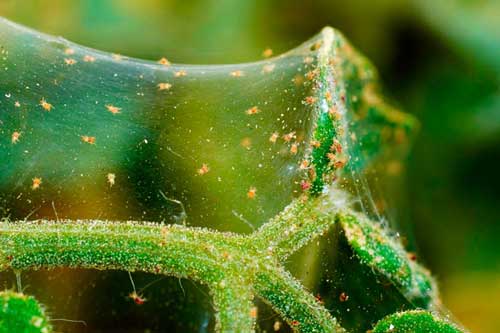

The main mistake made by inexperienced amateur gardeners in the fight against spider mites is the use of conventional insecticides for its destruction. The fact is that this pest belongs to the animal kingdom, so insect repellents simply will not work on it.
The drugs used in the fight against ticks are called acaricides and insectoacaricides.
In this table, we have collected the most popular brands of chemicals produced in Russia and abroad:
| Name | Manufacturer | Active substance | Mode of action |
| Aktara | Syngenta Crop Protection AG, Switzerland | Thiamethoxam, at a concentration of 250 g / kg and 240 g / l | Systemic insecticide, effective both for soil treatment and for spraying. It has an intestinal contact effect. |
| Fitoverm | LLC NBTs "Pharmbiomed", Russia | Aversectin C, at a concentration of 2 g / l | Insectoacaricide of biological origin, enteric - contact action to protect flower crops in open and protected ground. |
| Vertimek | LLC "Syngenta", Russia | Abamectin, 18 g / l | Non-systemic insectoacaricide of biological origin, intestinal action. |
| Nissoran | Nippon Soda Co., Ltd., Japan | Hexythiazox, at a concentration of 100 g / kg | A broad spectrum acaricide that affects the eggs, larvae and nymphs of ticks. |
| Sunmight | Nissan Chemical Industries, Ltd., Japan | Pyridaben, at a concentration of 200 g / kg | Contact acaricide, characterized by high activity in the fight against pests at all stages of their development. |
Important! When handling industrial pest control products, be sure to use personal protective equipment. Be sure to wear a respirator and heavy rubber gloves! Carefully dilute the required doses of poisons, not exceeding the norms specified in the instructions. ... Spider mite control methods using the example of individual plants
Spider mite control methods on the example of individual plants


In conclusion, we will give a few examples of how you can effectively get rid of a pest that has settled on flowers and plants.
If you notice that a tick has appeared on:
- Orchid. Immediately after purchase, treat the soil, moss and a flower pot with boiling water.
- Indoor rose. Wash the leaves with hot water and soap and cover with foil for a day.
- Gardenia. The best remedy is to increase the humidity in the air. This can be achieved by regularly spraying water around the plant pot.
- Cucumbers. Use sulfur and phosphorus preparations for spraying seedlings.
- Peppers, tomatoes, eggplants. Wash all infected plants with warm water and spray with biological or chemical acaricide, depending on the severity of the disease.
- Currants, strawberries. Remove fallen leaves and weeds around bushes to prevent insects from breeding. From folk remedies - try to spray the bushes with a decoction of onion peels. If a positive result is not achieved, use chemicals.
- Limone. Place the citrus under a UV lamp for 1.5 to 2 minutes. This will not only help heal the plant, but also increase its resistance to infections. Use a 96% alcohol solution to treat the leaves.
The fight against spider mites is complex. It is impossible to get rid of this omnivorous pest at once; a number of measures are needed to completely eliminate it.
But even after that, do not forget to carry out preventive measures so that the plants will delight you with their blooming and healthy appearance for a long time.
Useful video
Chemicals
Although they work better than folk remedies, not all chemicals can destroy pests the first time. Often, only adult insects are destroyed, and the larvae or eggs remain intact.
The tick quickly adapts to some drugs, so they have to be alternated. This is the only way to get rid of the spider insect forever.Only after each treatment, two days later, it is recommended to spray with "Epin", which will help the flower to continue to grow successfully.
- Fitoverm - It is one of the most effective biological preparations that will help to free all roses from sucking parasites in a short time. It copes equally with both adults and larvae. They are sprayed every week until no parasite remains.
- Fufanol, Anti-mite - They do well, but the parasites get used to them pretty quickly, so they are used only once.
- Neoron - It kills not only adult insects, but also eggs, which not every drug can destroy. With this tool, it is enough to process the rose twice with an interval of a month.
- Actellic - It is used only in the most advanced cases or after if no remedy could help. When working with him, you need to remove pets and small children from the room so that they do not poison them. Processing is done on the balcony or with open windows. The florist must have a protective mask, gloves and glasses. Even to such a strong substance, the parasite can adapt, so it is used no more than twice a year. Although he usually gets it right the first time.


Saving roses from a tick
It is very difficult to fight a tick in summer, because on hot sunny days it is especially active and strong. However, sudden cold snaps and precipitation can significantly reduce the number of pests on roses. Birds, which love to feast on small insects, will also help to partially exterminate the tick. But all these factors will not completely eliminate the problem, but only temporarily delay the growth of the colony.
To reduce the "concentration" of the mite on the plants, severely damaged areas will have to be removed. Further, conditions unfavorable for the pest should be created - the bushes need to be watered with water by sprinkling (this is how most mites are washed off with a stream of water). Then thoroughly shed warm water under the bushes.
Soap solution
For garden roses, you will need a concentrated soap solution. In a bucket of water, carefully dilute 200 grams of laundry soap. The resulting mixture is infused for a couple of hours and only then the flowers are sprayed with it.
By the way! Instead of soap, you can use liquid dishwashing detergent.
Treatment should include spraying all parts of the bush. You can also spray the ground at the base of the stem, but this must be done very carefully, without touching the roots with the solution, otherwise you can destroy the bush.
After 3-4 hours, the soap film is washed off with water and the plant is covered with polyethylene for 24 hours, creating high humidity (which the tick does not tolerate).
Reference! It is believed that green soap does a good job of killing ticks. By the way, its purpose is to exterminate insects. However, its effectiveness raises doubts among gardeners. Many of them argue that it can only be used as a preventive measure.
Alcohol solution
To prepare an alcohol solution, 30 grams of ammonia and 10 liters of water are needed. Having mixed, we get a substrate with which it is necessary to wipe all the damaged organs of the plant.


You can prepare the medicine in another way: add grated soap to boiling water and pour a glass of ammonia into the mixture. Plants are treated with a solution cooled to room temperature. There is no need to spray the solution on the flowers, it is optimal to apply the concentrate to a cotton pad and wipe the leaves and stems that are most affected by the mite. In addition to the bushes, you can also wet the topsoil.
Attention!
The alcohol solution is suitable for those varieties of roses with thick and dense foliage. Alcohol can "burn" thin delicate leaves.
Garlic tincture
There are several recipes for a useful broth:
- finely chop the head of garlic, dilute in hot water (10 liters), cool and process the plants;
- 50 grams of grated garlic is added to a three-liter jar of water and put in a dark place for a week. After this time, the infusion is filtered, 60 grams of concentrate is separated and diluted with 10 liters of water. Then processing is carried out;
- chopped garlic is bred in cold water and the whole flower garden is sprayed with the resulting mixture. The best effect will be if you add soap to the solution.
200 grams of onion husks are poured with 10 liters of water and left to infuse for 10-12 hours. The finished infusion is filtered and sprayed over the roses.
By the way! If there are not many roses on the site, then you can simply wipe the leaves with one of the above-described means. The procedure must be repeated every 7 days throughout the summer.
Infusion of tobacco
The mite does not tolerate the smell of tobacco and quickly retreats from the plants if they are sprayed with a solution prepared on the basis of tobacco. The recipe for a useful tincture is as follows: 50 grams of dry tobacco powder is mixed with water and left for a day. Then the mixture is filtered and again diluted with water. The finished product is sprayed two to three times every 7-10 days.
For the extermination of small individuals, an easy-to-prepare agent based on essential oil that the tick does not tolerate is suitable. Add 8-10 drops of rosemary to a liter of water, mix well and wipe the leaves of roses abundantly with a ready-made solution.
We suggest that you familiarize yourself with: Subcutaneous tick in cats: treatment, symptoms
A decoction of the tops. Potato and tomato tops also do a good job of killing the pest. To prepare the broth, finely chop the tops (400 grams), pour boiling water over it, boil over a fire for 30 minutes. Before spraying, the mixture is cooled, filtered and diluted with water in a ratio of 1: 3. Such a remedy will not harm the flowers, even if you use it repeatedly throughout the growing season.
Dandelion infusion. The tick also refers to the most unpleasant odors as dandelion, which plays into the hands of the gardener. Roses are sprayed with a mixture of 40 grams of medicinal dandelion and 1-2 liters of water. By the way, before the procedure, the solution should be infused for 5-6 hours.
A decoction of cyclamen. A useful broth is prepared from 50 grams of flower roots. The roots are peeled and then boiled in a little water for an hour. Then the substrate solution is filtered, and the leaves and stems that have received the most severe damage are wiped with the resulting cloudy water. The procedure can be repeated 2-3 times with an interval of five days.
Infusion of yarrow. It is necessary to take a kilogram of dry leaves of a medicinal plant, pour boiling water and let it brew for 3-4 days. The infusion should get a light yellow color with a tart smell inherent in yarrow. The finished infusion is used to process roses every 7 days.
Infusion of henbane. A poisonous plant, like no other, is suitable for the destruction of a malicious pest. To prepare a saving infusion, you will need 1 kilogram of henbane, which is poured with water and left to infuse for about 10 hours. Then the infusion is filtered, grated soap is added. The resulting concentrate is diluted with 10 liters of water and only then the bushes are processed.
Horseradish infusion. The roots are finely chopped (one kilogram is enough), poured with cold water in a ratio of 1:10, insisted for several hours and the plants are watered.
A decoction of alder leaves. Fresh gray alder leaves (2 kilograms) are poured into cold water and left to brew for a day. Then the substrate is boiled over low heat, cooled and again insisted for 12 hours. The resulting mixture is filtered and the soil is spilled in the flower garden.
Wormwood decoction. Dry twigs of wormwood are placed in a bucket of water and left to soak for two days. Then the compost is boiled for 30 minutes, filtered. Before the spraying procedure, the mixture is diluted with 10 liters of water.
Chemicals
The most effective are modern chemical preparations aimed at combating spider mites.It is advisable to choose special products, because insecticides developed against insects will not work. Acaricides and insectoacaricides help fight ticks. You can get rid of it completely if you use the drugs several times after a certain period of time. Such a scheme will allow the destruction of adults and larvae that emerged from the eggs after a while. Biologics are better for use, as they are less toxic.
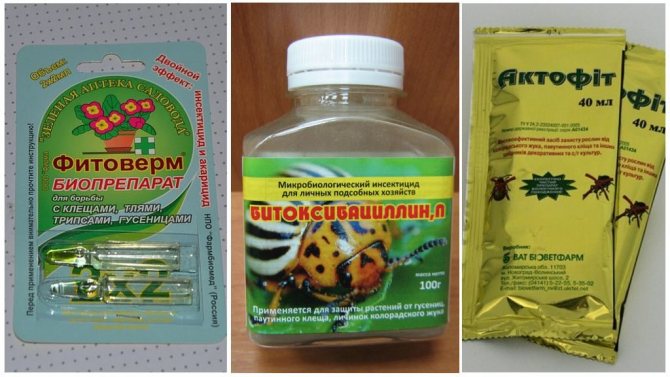

The most popular drugs are:
- Neoron. A unique drug that destroys both adults and eggs. Two treatments will be enough. Dilute the contents of the 12.5 ml ampoule in 10 liters of water, mix thoroughly and spray.
- Fitoverm. Biological product with a low degree of toxicity. Spraying with Fitoverm should be done outdoors or in a well-ventilated area.
- Aktofit. The drug is used in a proportion of 4 ml per 1 liter of water. For spraying, it is better to choose 2 days without precipitation so that the rain does not wash the solution off the leaves.
- Aktara. It is used for most pests, but not against mites. The drug Aktara is diluted at the rate of 8 g per 10 liters of water. Spraying should be repeated after 10-15 days.
- Alatar. The biological product Alatar is diluted at the rate of 5 ml per 10 liters of water. The instructions recommend spraying 1 or 2 times to increase the effect.
- Actellic. The drug Actellik is a toxic insecticide with a pungent odor, therefore it is prohibited to use it indoors. Diluted with 1 ml per 1 liter of water. More suitable for indoor plants, since a large amount is required for the garden.
- Anti-tick. Effective against ticks. Anti-mite is diluted at the rate of 1 ml per 1 liter of water. The protection is valid for 25 days. Because of such proportions, it is beneficial to use it not in the garden, but for a small number of plants in a greenhouse or greenhouse.
- Karbofos. It is a broad-spectrum drug. Processing is carried out in dry, calm weather. The solution is prepared 75 g per 10 liters of water. Suitable for use in the garden, since it takes 2 liters of solution to process 10 bushes. For details on the use of Karbofos, see the instructions.
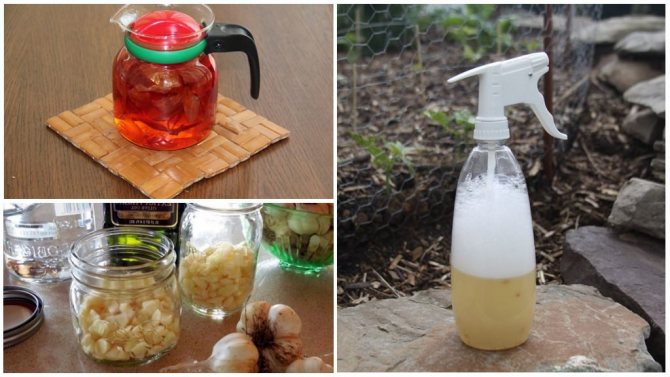

Control methods
You can get rid of a tick on a rose both with the help of acaricides and by resorting to folk remedies. The choice of drug should always be based on the degree of contamination.
Chemicals
In the fight against spider mites with a large colony population, it is customary to use modern tools, which are acaricides. These funds are divided into two groups: specific acaricides and insectoacaricides. The former work exclusively against spider mites. Such drugs can have a different chemical composition, but they all exhibit contact activity. The latter destroy both spider mites and other pests that live on roses. Let's consider the most popular acaricides in more detail.
- "Actellik" - a drug from the organophosphorus group, characterized by intestinal contact action. The active substance is pirimifosmethyl. Actellik provides reliable protection against parasites for 1-2 weeks. And in order to achieve a positive result, the treatment is recommended to be carried out twice - the second one 7 days after the first. It is not suitable for use in domestic conditions, as it is rather toxic, but in open air conditions it shows very good efficiency. To prepare a working solution, dilute the contents of one ampoule (2 ml) in a liter of water. The finished preparation is sprayed on the aerial parts of the affected plants, paying special attention to the lower surface of the leaves.
- "Apollo" - destroys spider mites when they are in the phase of eggs, larvae and nymphs, sterilizes adults, because of which they lose their ability to reproduce. Its active ingredient is clofentezine. Apollo provides plant protection for a long period of time: from 2 to 3 months.Processing should also be done twice. If necessary, you can additionally use compounds from the same group. To prepare the working fluid, the contents of one ampoule (2 ml) are diluted in five liters of water.
- "Floromite" - the main active component of this drug is biphenazate. It destroys the pest, which is in the active stage of its development, and shows activity rather quickly - after a couple of hours after treatment, the parasites lose their ability to damage plants. The maximum effectiveness is observed after 3-4 days and lasts about three weeks. Spraying is carried out twice at weekly intervals. The working solution is prepared from 2 ml of the product diluted in five liters of water.
Important! Before you start using Floromite, read the instructions carefully, because if it is used incorrectly, the parasites will quickly develop resistance!
However, it should be remembered that frequent use of broad-spectrum drugs can aggravate the situation. This is due to the fact that such agents destroy other insects, including those that are natural enemies of the spider mite. In addition, with repeated spraying of roses with insecticides based on pyrethrins and phosphates, the nitrogen concentration on the surface of the leaves increases, which is only beneficial to this pest.
Important! In order to prevent parasites from developing immunity to the insecticide, it must be changed from time to time. Only here it is important to change not the name of the drug, but the active ingredient!
Folk remedies
Sometimes it is possible to get rid of a tick on a rose with the help of folk recipes, which can be based on both essential oils and alkaloids, and other natural compounds. Treatment with such solutions must be carried out at least three times with an interval of five to seven days.
- Infusion of garlic. To prepare it, you need to chop a pound of garlic and pour three liters of water. After 5 days of infusion in a warm place, the agent is filtered and diluted with water - 55-60 ml of the drug for 10 liters of water. 50 g of laundry soap is added to the finished solution and used to spray plants and soil.
- Infusion of black henbane. Grind a kilo of dry raw materials and pour 10 liters of water. Leave it warm for 12 hours, then filter and add 40-45 g of laundry soap. With the finished preparation, we carefully process the infected rose bushes.
- Soap solution is good for spider mites. Crushed laundry soap is diluted in water to make a lot of foam, and the leaves and stems are treated with a ready-made solution. It is better to wipe the plant with a soft sponge. As for tillage, it is very important to observe moderation here - it is necessary to spray the soil carefully, literally a few drops. Otherwise, the root system will be damaged, and the roses will simply dry out after a week.
Prevention against ticks
When buying in an unverified place, if the plant was presented to you, do not rush to put it with the rest. Let it be quarantined separately for two or three weeks. During this time, it will be possible to determine whether it is infected with a tick or other pests. But it is better to play it safe and treat it with drugs.
Before transplanting a plant into a new soil, it must also be treated with pest control agents. You can use the modern method: put the earth in a glass jar and put it in the microwave for a couple of minutes. In two minutes, not only pests will die, but all microbes.
Remember
- The fight against ticks must be started on time, otherwise it will be much more difficult to get rid of it, since it multiplies quickly.
- Be sure to follow the prevention of roses, to keep them safe from ticks or other parasites.
- Take care of your roses properly, so that they are not weakened.Diseases and pests most often choose weak and neglected plants, as they cannot resist disease.
- Observe safety rules when working with chemistry, so as not to harm your health: carry out work only in a respirator and gloves, do not drink or eat during work, and afterwards wash your hands and face thoroughly with soap and water.
Pest prevention
There are several recommendations on how to prevent ticks from affecting roses. Basic rules include:
- regular inspection of the bushes, special attention should be paid to the "secret" places (the underside of the leaves);
- if you find a web, you need to make sure that it belongs to a tick. Its web has a very small pattern, its color is yellowish with a whitish bloom. Hundreds of moving particles can be seen under it - these are the larvae of the pest that were born;
- frequent spraying of plants with cool water during hot, clear weather;
- wiping the leaves once a month with an herbal solution or soapy water. By the way, they need to process not only plants, but also pots, shelves, windowsill, frames;
- timely removal of faded buds and yellowed leaves - it is the weakened parts of the plants that attract the pest;
- conducting spring sanitary pruning of roses and cutting of wild growth. Landings should be sparse;
- spider mites love orchids. Therefore, in order to protect roses from getting an insect on them, you should protect them from such an unfavorable neighborhood;
- planting useful plants next to roses that produce insect repellent substances (calendula, marigolds, chamomile, onions, nightshades)
If you follow simple rules, you can prevent the appearance of an uninvited guest:
- After buying new indoor plants, they should be quarantined for the first couple of weeks to make sure that nothing threatens their health.
- It is imperative to disinfect the soil before planting.
- When growing a room rose, you should maintain a high humidity. You can spray the flower with water from a spray bottle every day.
- As a preventive measure, the plant is sprayed with a weak solution of an acaricidal preparation.
- Every week, bathe the rose under the shower.
- Remove dried leaves.
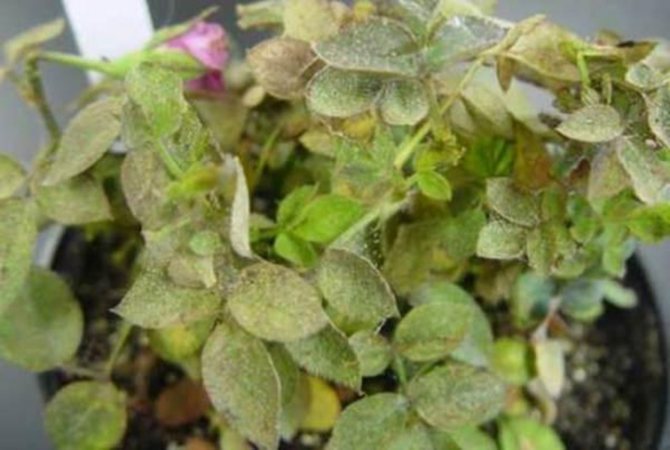

The presence of a spider mite on a room rose is an unpleasant phenomenon. Therefore, at the slightest suspicion, it is worth tightening preventive measures or doing unscheduled processing. For this, roses will be thanked with their delightful flowers.
You can add spider mites to home flowers by accident with soil, a flower bouquet or a new plant. Sometimes the owner of the house brings pests on his clothes without noticing them. A tick can also enter the house with a stream of air through an ajar window.
But in order to take root on plants, spider mites need dry and very warm air. By sprinkling roses daily with water from a spray bottle, you can minimize the chances of parasites taking root on the plant. Moisture allows the rose leaves to cool and maintain good immunity.
Folk ways to save roses
If the pest was detected at the initial stage of infection, then it is possible to deal with it using folk methods.
Soap solution
To combat spider mites on roses, ordinary crushed laundry soap or tar is well suited. Alternatively, you can replace it with dishwashing liquid. The soap solution is prepared taking into account 200 g of the main raw material per bucket of water; before use, you need to let it brew for several hours. All parts of the bush, the soil, with the exception of the roots, are subject to processing, otherwise the rose may die. After 3-4 hours, wash off the foam from the leaves with clean water, and create high humidity around the flower using polyethylene, covering it on top for a day.
Alcohol solution
This is one of the highly effective folk remedies against insects on roses. Prepare it at the rate of 30 ml of ammonia per bucket of water.The sponge is moistened in a solution and used to wipe all organs of the bush. Another version of the drug involves the use of soap dissolved in boiling water, with the addition of a glass of ammonia. They process the leaf mass of the plant and the soil.
Garlic tincture
A decoction of garlic will help save a homemade rose from a spider mite. First, you need to finely chop one head, then dilute it in a container with hot water (10 l), let it cool, and use it for processing. Another way to cure the plant:
- Grate 50 grams of garlic.
- Add it to a 3L jar of water.
- Place in a dark place for 7 days.
- Strain and use with 60 ml of concentrate per bucket of water.
The easiest method against a pest on roses is to use chopped garlic diluted in cold water. For better adhesion, it is recommended to add a small amount of liquid soap to the infusion.
Onion peel decoction
To prepare the product, use onion husks (100 g) and hot water (5 l). The infusion time is 5 days. Strain it before spraying.
Infusion of tobacco
If you know how to spray roses from spider mites, then you can help them get rid of it in a short time. The pest does not tolerate the smell of tobacco. A solution is prepared from dry powder (50 g) and water. The infusion time is a day. After the solution has been strained, it is again diluted with water. Processing is carried out every 7-10 days 2-3 times.
What do ticks look like?
Spider mites are tiny, barely distinguishable insects. Often they are so small that they are invisible, but the damage they cause is tangible. If measures are not taken in time, rose bushes will lose their leaves.


Danger to the plant
Feeding on plant juices, mites do great harm to plantings of vegetables, fruit trees, flower beds. The plant loses its vitality, the growth rate slows down, foliage begins to fall off, buds and fruits are deformed.
The pest is able to multiply quickly and move to neighboring plants. If you do not take timely measures to protect roses from ticks, you can lose some of your favorite bushes in a short time.


A few words about the pest
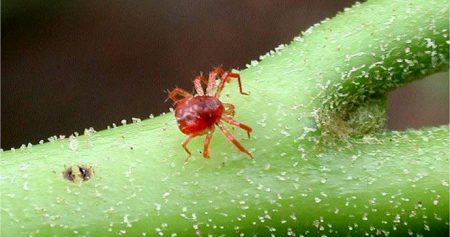

A spider mite is a small oval-shaped arachnid insect, 1 millimeter in size, red in color (the larvae are light green in color). Plant sap is the main food of the pest. The insect is omnivorous, it attacks absolutely all plants that come across on the way. Can be transported long distances using its web. At air temperatures above +23 degrees, the mite multiplies quickly, laying up to several hundred eggs on the leaves. The larvae are especially gluttonous - they drink vegetable juice. In this case, the process of photosynthesis is disrupted, the plant is depleted and dies.
Attention! The spider mite most often affects young bushes that do not have strong immunity. On such bushes, when exposed to a pest, buds do not have time to form.


